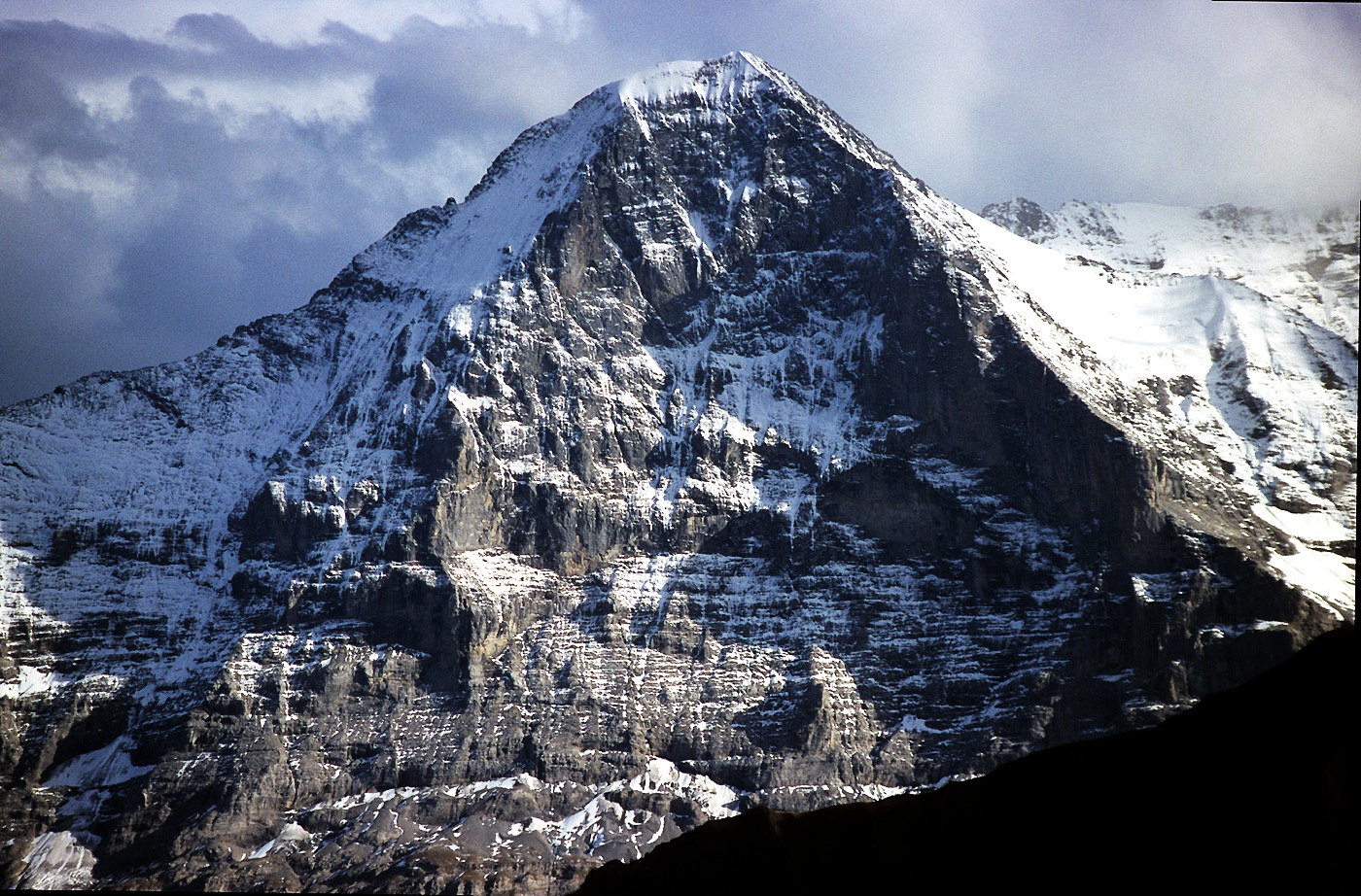The Eiger (3,970 m (13,025 ft)) is a mountain in the Bernese Alps in Switzerland. It is the easternmost peak of a ridge crest that extends across the Mönch to the Jungfrau at 4,158 m. The northern side of the mountain rises about 3,000 m (9,800 ft) above Grindelwald and other inhabited valleys of the Bernese Oberland, and the southern side faces the deeply glaciated region of the Jungfrau-Aletsch, covered by some of the largest glaciers in the Alps.
The first ascent of the Eiger was made by Swiss guides Christian Almer and Peter Bohren and Irishman Charles Barrington, who climbed the west flank on August 11, 1858. The north face, 1,800 m (5,900 ft) (German: Nordwand, "north wall"), was first climbed in 1938 by an Austrian-German expedition and is one of the six great north faces of the Alps. Since 1935, at least sixty-four climbers have died attempting the north face, earning it the German nickname Mordwand, literally "murder(ous) wall".
From Kleine Scheidegg a railway tunnel runs inside the Eiger and two internal stations provide easy access to viewing-windows in the mountainside. This railway, the Jungfraubahn rack railway, terminates in the Jungfraujoch, between the Mönch and the Jungfrau, at the highest railway station in Europe.
The Eiger is mentioned in records dating back to the 13th century but there is no clear indication of how exactly the peak gained its name. The three mountains of the ridge are commonly referred to as the Virgin (German: Jungfrau - translates to "virgin" or "maiden"), the Monk (Mönch) and the Ogre (Eiger). The name has been linked to the Latin term acer, meaning "sharp" or "pointed," but more commonly to the German eigen, meaning "characteristic."
From Wikipedia, the free encyclopedia

0 komentar:
Posting Komentar